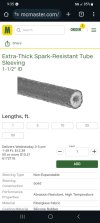Randy Folsom
Supporter
I am curious as to what the best known method is to insulate the tubes that run through the spine. Seems to be a wide variety of solutions. Hoping one or two stand out above the others. Also, are the tubes provided by RCR stainless or otherwise protected from corrosion?



![IMG_1499[1].JPG](/data/attachments/123/123174-e658967107a3d02fd1ad7fc1d12c12b5.jpg)
![IMG_1507[1].JPG](/data/attachments/123/123175-82e1c78845195d0498cd85a0f55585ab.jpg)